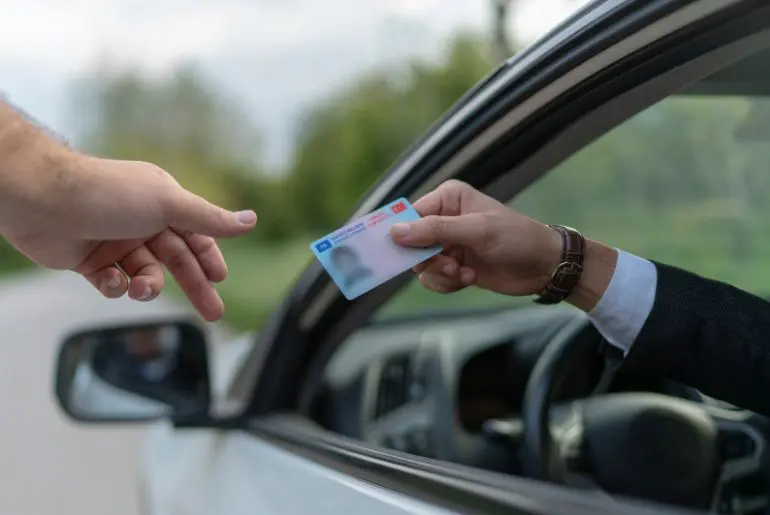Driving in a new country can be an exciting way to explore, and the United Arab Emirates (UAE) is no exception. From the towering skyscrapers of Dubai to the golden dunes of Abu Dhabi, the UAE offers tourists stunning sights and smooth highways that make driving a true pleasure. But before you get behind the wheel, it’s important to understand the rules, and that starts with the International Driving Permit UAE.
In this guide, we will explain everything tourists need to know about using an International Driving Permit in the UAE. We’ll cover who needs one, how to get it, what documents you should carry, and practical tips to ensure a safe and enjoyable driving experience.
What is an International Driving Permit (IDP)?
An International Driving Permit (IDP) is an official translation of your home country’s driving license into multiple languages. It is not a standalone license but a supplementary document that works alongside your original driving license.

The IDP is recognized in over 150 countries and helps authorities verify that you are a valid driver in your home country.
Why is an International Driving Permit UAE important for tourists?
The UAE welcomes millions of tourists every year, many of whom prefer to drive to explore different emirates at their own pace. The International Driving Permit UAE is important because:

- It ensures legal compliance with local traffic laws.
- It helps avoid fines or complications if stopped by the police.
- It serves as an identity document in case of accidents or emergencies.
- Car rental companies in the UAE often require an IDP along with your home country license.
Who needs an International Driving Permit in the UAE?
Tourists from most countries need an International Driving Permit UAE if they want to rent or drive a car. However, some countries are exempt and can use their national licenses directly.
Countries whose licenses are accepted without an IDP include Gulf Cooperation Council (GCC) countries such as Saudi Arabia, Oman, Qatar, Bahrain, and Kuwait, as well as some European countries including Germany, France, and the UK (for short stays). The United States and Canada are also generally accepted.
However, rules can change, so it is always safer to carry an IDP even if your country is on the exempt list.

How to get an International Driving Permit for the UAE
Getting an IDP is simple and usually inexpensive. Here’s a general process:
- Apply in your home country before you travel. You cannot obtain an IDP once you are in the UAE.
- Visit your country’s automobile association. For example, in the US, it’s the American Automobile Association (AAA). In the UK, it’s the Post Office or RAC.
- Provide the necessary documents:
- Valid national driving license
- Passport-size photos
- Completed application form
- Payment of the applicable fee
- Processing time is usually same-day or within a few days.
Documents you need to drive in the UAE as a tourist
Before renting or driving a car in the UAE, make sure you have:
- Your original driving license
- Your International Driving Permit UAE
- A valid passport and visa
- Credit card for car rental payments and security deposits
- Insurance documents (usually provided by the rental company)
Carrying all these documents can help you avoid delays or issues at police checkpoints.
Can tourists rent cars without an International Driving Permit?
Some car rental companies might accept your home country’s license if it’s from an exempt country. However, most international rental companies strongly recommend having an IDP.
Without an IDP, you risk being denied a rental car, being fined by authorities, and not being covered by insurance in case of an accident.
Driving rules tourists must know in the UAE
The UAE has strict traffic laws designed to keep roads safe. Here are some important points:
- Drive on the right side of the road.
- Seatbelts are mandatory for all passengers.
- There is a strict zero-tolerance policy for drinking and driving.
- Speed limits are strictly enforced using radar cameras.
- Using a mobile phone while driving is illegal.
Violations can result in heavy fines, license points, or even imprisonment in severe cases.
Road signs and language
Road signs in the UAE are in Arabic and English, making it easier for tourists to understand directions and warnings. However, it is always good to familiarize yourself with local signs before your trip.
Insurance and roadside assistance
When renting a car, insurance is usually included, but make sure you understand what is covered. Comprehensive insurance is highly recommended.
Most rental companies also provide roadside assistance, which can be very helpful in case of a breakdown in the desert or on highways.
Renting a car: What to expect
Requirements include a minimum age of usually 21, though some luxury car rentals require drivers to be 25 or older, and a valid credit card.
Vehicle options range from economy cars to high-end sports cars and SUVs. Choose a vehicle that suits your travel plan and driving confidence.
Be prepared to pay a security deposit, which is refunded if no damage occurs. Always inspect the car carefully and take photos before and after rental.

Driving in different emirates
Each emirate (Dubai, Abu Dhabi, Sharjah, etc.) follows federal UAE laws, but there might be small differences in speed limits or enforcement intensity. Dubai has many traffic cameras and heavy fines for violations. Abu Dhabi has higher speed limits on some highways and more desert roads for long-distance drives. Sharjah tends to have more conservative rules and lower speed limits in city areas. Knowing these differences can help you avoid surprises on the road.
Parking tips
Paid parking is common in cities and is usually marked clearly. You can pay via machines, apps, or SMS. Avoid illegal parking to prevent heavy fines and towing.
Emergency numbers
If you face an emergency on the road, you can contact:
- 999 for police
- 998 for ambulance
- 997 for fire department
Alternatives to driving yourself
If driving feels overwhelming, there are plenty of alternatives:
- Taxis are readily available and affordable.
- Ride-hailing apps like Uber and Careem operate in most emirates.
- Public transport such as metro, buses, and trams in Dubai are modern and efficient.
- Private chauffeur services are also available for a more luxurious experience.
Common mistakes tourists make when driving in the UAE
Not getting an IDP is a common mistake. Many tourists assume their home license is enough. Ignoring speed limits is another major mistake as radar cameras are everywhere.
Driving slowly in the fast lane can annoy other drivers and lead to fines. The left lane is for overtaking only. Underestimating desert driving can be dangerous. It requires special skills and vehicles.
Final tips for driving safely in the UAE
Always carry your International Driving Permit UAE and original license. Check road conditions and weather, especially in desert areas. Stay hydrated as long drives in the desert heat can be exhausting. Keep an emergency kit, water, and a charged phone in the car.
Conclusion
The UAE offers a fantastic driving experience, from modern cities to breathtaking desert landscapes. But to fully enjoy it, you need to prepare properly, starting with an International Driving Permit UAE.
This document not only makes you compliant with local laws but also gives you peace of mind as you explore this beautiful country. So, before you book that convertible or powerful SUV, make sure your paperwork is ready. Safe travels and happy driving!
Follow us on Instagram: UAE STORIES
Read More: Shocking reason why UAE Chinese car insurance costs more than Japanese cars














